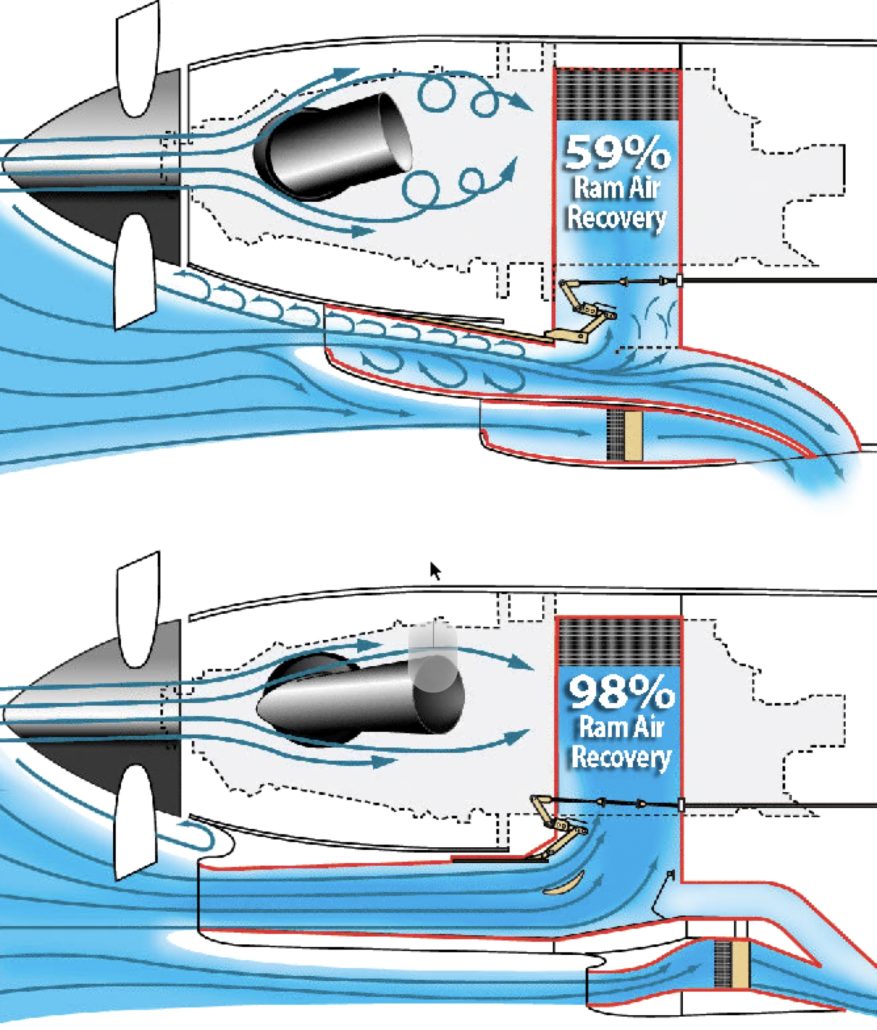

Pitot Cowling Ram Air Recovery System
All aircraft manufacturers appreciate the advantages of an aerodynamically clean airframe. Over the years, the external shape of the fuselage, wings and cowlings have been changed and refined in a continuing effort to reduce drag and increase performance. In recent years, aeronautical engineers have given equal emphasis to the internal airflow (the airflow that enters the cowling inlet and passes through ducting into both of the engine intakes) of an airframe as an additional source of enhanced speed and efficiency. Aeronautical engineers gauge the aerodynamic efficiency of the cowling and ducting by measuring how well high velocity air at the cowling inlet is converted into static pressure around the engine’s inlet. This static pressure is generally expressed as a percentage of ram recovery. For instance, 100% ram recovery would indicate that 100% of the inlet air’s energy is converted into static pressure at the engine inlet. The higher the ram recovery percentage, the faster the aircraft will go. This is because at a given ITT, there is a finite amount of energy that can be produced by a turboprop engine, and this energy must be shared by the two power absorbing sections of the engine, namely the compressor section, which compresses air for combustion and the power section, which turns the propeller. By increasing the ram recovery to the engine inlet, less energy is used by the compressor section leaving more energy available to drive the propeller.
Noticeably, all later model King Air C90A’s, C90B’s and the F90-1 are equipped with cowlings offering improved ram air recovery. Their performance in both climb and cruise is markedly improved over earlier models.
Recognizing the performance improvements high ram air recovery offers, we developed an all new “Pitot Cowling System” specifically for the King Air 90 and 100 series aircraft not equipped at the factory with this powerful technology. Great care was taken in the design to minimize cost and facilitate ease of installation in the field.
